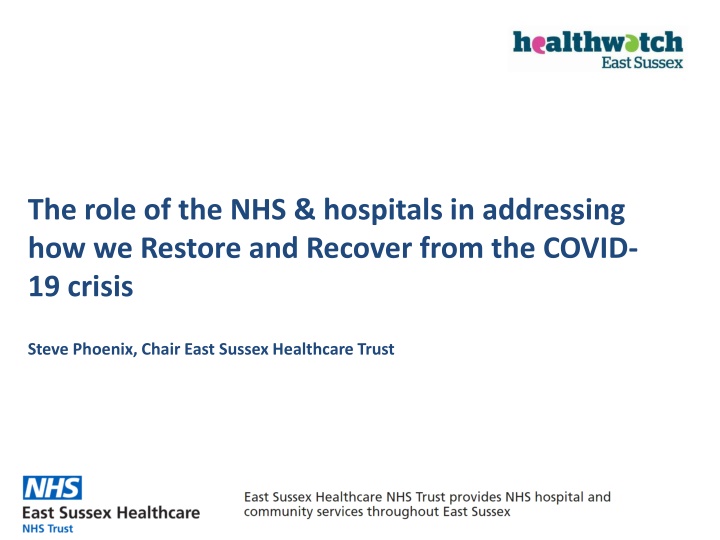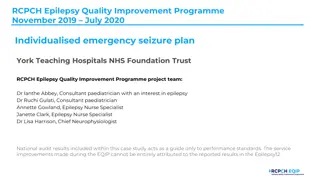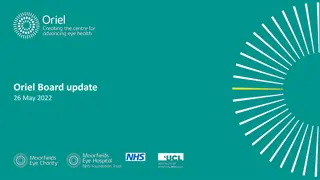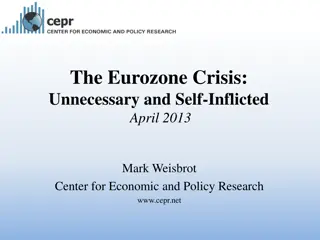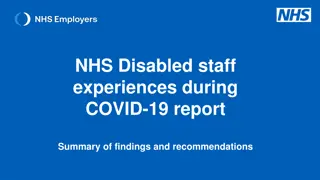Role of NHS & Hospitals in Restoring from COVID-19 Crisis
The NHS and hospitals play a crucial role in addressing the COVID-19 crisis, responding effectively, and adapting for the future of healthcare trends post-pandemic. The pandemic has accelerated changes, emphasizing community care, digital advancements, and collaborative approaches.
Download Presentation

Please find below an Image/Link to download the presentation.
The content on the website is provided AS IS for your information and personal use only. It may not be sold, licensed, or shared on other websites without obtaining consent from the author.If you encounter any issues during the download, it is possible that the publisher has removed the file from their server.
You are allowed to download the files provided on this website for personal or commercial use, subject to the condition that they are used lawfully. All files are the property of their respective owners.
The content on the website is provided AS IS for your information and personal use only. It may not be sold, licensed, or shared on other websites without obtaining consent from the author.
E N D
Presentation Transcript
The role of the NHS & hospitals in addressing how we Restore and Recover from the COVID- 19 crisis Steve Phoenix, Chair East Sussex Healthcare Trust
What COVID did in Sussex spread & severity Rate of COVID by upper tier Local Authority Cumulative rate of COVID cases by location in East Sussex Mid- July Centred around our three largest towns Hastings is very low when compared with similar towns Comparatively low severity during wave 1 and into wave 2 Late- Sept
How our hospital responded what we learned Some unalloyed positives COVID sped up existing changes where we were struggling with implementation It galvanised staff to innovate & change anew (e.g. redesign outpatient activity & space) Robust/rapid additional infection prevention & control arrangements were essential Our years of building relations and services with ESCC meant we could respond effectively alongside a recognition of the complexity in our work The pandemic dash to ensure readiness left gaps in routine services COVID s shadow means a generational shift in thinking about design and space The outside work lives of our people are diverse - we must match this with flexibility We have room to travel in order to become truly integrated still institutional-focused
What could this mean for future-proof healthcare trends Fundamental reassessment of the role of hospitals (in a post-COVID world) No longer the default: health is made at home, hospitals are for repair Smaller acute cores networked into a plurality of smaller community centres Integrated or networked range of non-hospital providers (including third/social) Digital/virtual increasing its role in care provision at a quickened pace but isn t our health too different, too important, too complex? While there is likely to be an irreducible core of interventions exempt from this trend all other sectors have seen revolutionary changes in the last decade (e.g. banking) Greater collaboration is essential to provide right care, right time COVID has shown that collaboration & mutual support optimises the care Supporting the greatest good of the greatest number applies at a Sussex level Making these arrangements sustainable may require us to think about what goes where Boundaries, expectations & perceptions will remain in flux The only constant is change means continuous re-adjustment of understanding Applies to providers of care & recipients (the empowered patient = changed dynamic)
How these link to the themes of today some issues & impact How do we organise community care what gets done where? Children & Young People Managing YP services across physical & mental health (online) What models of community nursing best support crisis management, admission avoidance and empower family/carers & patients Care homes & care at home How can we align GPs, community teams and acute physicians to support care homes/most vulnerable residents How do we ensure (given our demography) we support digital services effectively and appropriately? Digital access to services How do we ensure this is patient-driven? Prevention & action on key determinants of health How we align services and priorities around neighbourhood health needs? What role can health and care organisations play to support this together?
